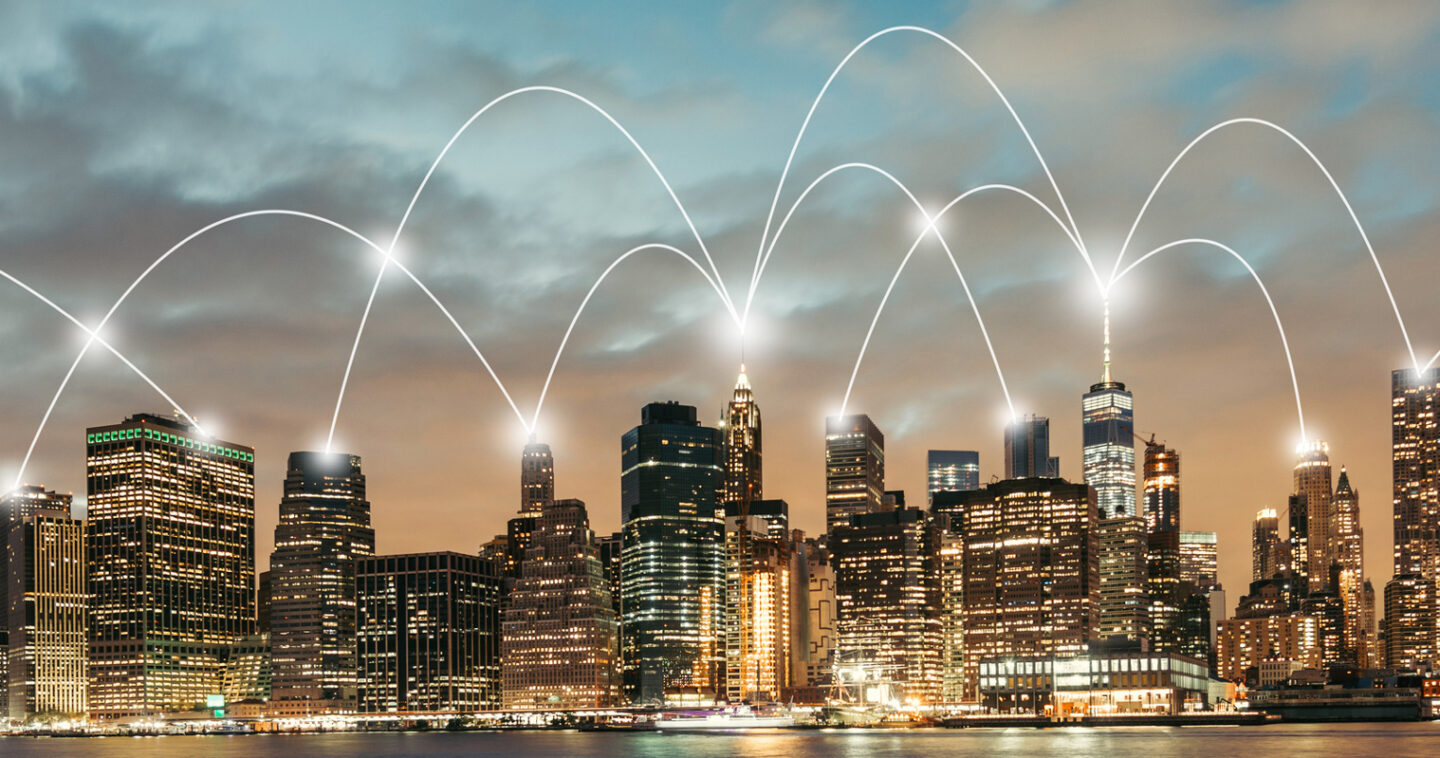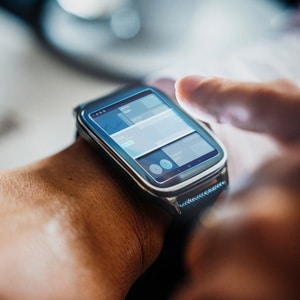This blog post was updated in July 2020 to provide a high-level definition of the Internet of Things and an estimate of globally connected devices by 2030.
As smart sensors are placed in billions of connected devices around the world, new IoT applications are generating massive streams of data that enable a world of opportunities. Consider the rise of smart watches that allow people to track their fitness, monitor their sleeping patterns, measure their heart rate, and more. Think of a future where self-driving cars are able to collect, process, and store driving data at the edge to make road travel safer and more enjoyable. And, that’s just the start.
In this article, I’ll highlight the IoT use cases that are already having a big impact on our daily lives. But first, let’s define what we mean when we talk about IoT.
What is the Internet of Things?
Simply put, the Internet of Things is the digital network of connected devices, machines, platforms, and systems enabled by smart sensors that communicate using the Internet — all without human assistance. Estimates from IHS Markit place this figure reaching over 100 billion connected IoT devices by the year 2030. These vary from consumer-centric devices (such as health wearables) to enterprise-focused machines (think automated manufacturing equipment). IoT data is generated and exchanged from embedded chips and external sensors using the Internet. Much of this information has historically been unused, but it represents an opportunity to create business value through a $3.6 trillion IoT data marketplace by the year 2030.
1) Autonomous and Connected Vehicles
Down the road, vehicles might be able to reach Level 5 autonomy and drive themselves fully without human intervention. Today, however, car makers and automotive startups are working on getting level 2, 3, and 4 self-driving technology right. Cameras, radar, LIDAR and a host of other onboard sensors are being used to capture information about road conditions, inform appropriate driving actions, and potentially prevent accidents. To make this happen, nearly 1 terabyte of data will be stored onboard in the near-term, and this amount could balloon to 2+ terabytes in the next decade.
Yet, there’s more to the cars of tomorrow than just autonomous driving. Thanks to the Internet of Things, cars can communicate with each other, the road infrastructure, and, perhaps someday, even pedestrians by using “vehicle-to-everything” or “V2X” technology. Fleets of autonomous vehicles could be managed through this type of communication, making travel faster and safer. Onboard the car, IoT-enabled devices could improve the engine diagnostics, GPS data, and infotainment system.
2) Smart Security for Businesses and Homes
Historically, security systems often simply used a low-resolution camera to passively capture video. This trend held whether at private residences or commercial properties. Now, smart security systems are being purpose-built to capture, store, and analyze continuous video streams. On top of the 4K video captured by high-resolution cameras, these systems can use an analytics layer with machine learning software to carry out pattern recognition and motion detection. For public transportation providers and venue managers, these real-time insights play a meaningful role in public safety – thanks to robust storage and compute at the device-level.
3) Connecting Your Home to the Internet (of Things)
What if your home could be mostly automated? That’s the direction that connected home technology is headed in this IoT use case. Smart speakers function like central command, enabling your household electronics to perform a variety of voice-activated functions. You could, for example, instruct your TV to stream the latest episode of your favorite show, while dimming the living room lights and setting the thermostat to a cozy temperature. This approach stretches even further by integrating refrigerators, washers, dryers, and more. The goal is to provide control for most or all of a home’s systems – including energy, climate, entertainment, appliances, and home security – through a connected network of devices, sensors, tools and platforms.
4) Smart Watches, Fitness Trackers, and other Wearables
Thanks to an influx of new personal devices, the wearables market is thriving. In fact, a recent report predicts that this industry will cross over $27 billion and 233 million units sold annually by the year 2022. This global adoption is due in large part to smart watches, which are expected to make up over half of all wearables sold in the coming years. Consumers are looking for seamless connection and interaction between their smartphones and smartwatches to track, manage, and secure their data — especially sensitive health data. At the same time, industry analysts are forecasting flat-to-declining sales for fitness trackers – possibly due to a perceived lack of features and inability to sync with existing smart phones.
But, technological innovation won’t just come on the wrist. A new subcategory known as “hearables” could disrupt the wearables industry, using voice-activated, connected headphones and earphones. With more headset makers ditching the headphone jack, these types of devices are expected to become common place in the future. Another opportunity is in portable medical devices that monitor blood pressure and heart rate, as well as alert ambulance dispatchers during a medical emergency.
5) Machine-to-Machine (M2M) Connected Devices
Today’s factories are using IoT-enabled machines to work smarter, not harder. By equipping machines with sensors, factory managers can more accurately map machine workloads, inputs, and outputs. They can also more closely track machine wear-and-tear, which leads to maintenance that is predictive rather than reactive and improves lifespan. With these features, factories are increasingly becoming automated, thanks to the wave of Industry 4.0. M2M devices use embedded and removable flash solutions to aggregate data into a single stream at the edge. This gateway is used to monitor and react to changing conditions on the factory floor. At the same time, unused data is passed on to the central cloud or data center for further processing.
6) Supply Chains of the Future
Another IoT use case is in supply chains, which are increasingly global and complex. Customer requirements evolve rapidly, products have to be procured, shipping and delivery routes have to be coordinated – you get the picture. In response, companies are creating connected enterprise systems and using data modeling as a key part of a broader data management strategy. Low-power IoT devices are also being used to track assets throughout the supply chain, and monitor product quality such as temperature, vibration and container openings. By using IoT-enabled devices and transportation routes, further improvements can be made to route planning by collecting in-transit, supply chain data.
Our previous blog post explored how Western Digital is building its future supply chain with data science – leading to better shipment consolidation, reliability, cost, and time in transit.
7) Drones for Industrial and Search & Rescue Operations
For cinematographers and photographers, drones have helped record stunning landscapes previously unavailable to visual artists. But, these flying devices aren’t just used for this purpose. Oil rig workers are using drones to complete full rig inspections quicker, without sacrificing worker safety or production downtime. Ecommerce companies are looking into drone delivery of their buyers’ goods to their front doorstep. Even nonprofits are making use of drones to monitor deforestation in environmentally-fragile communities.
Outside of commercial uses, drones are serving the public good in search and rescue missions. These machines are helping search and rescue teams locate victims more quickly, evaluate the status of victims, and map the right path for rescue missions. In dangerous mountain rescues, successful drone operations require high performance and high capacity data storage. Read our latest white paper about how reliable storage makes a difference in life-threatening emergencies.
8) Smart Cities: Energy, Transportation, Parking, and More
One of the most promising IoT use cases is in creating smarter, more efficient cities. Public energy grids can be optimized to balance workloads, predict energy surges, and distribute energy more equitably to customers. The same goes for transportation systems in dense, urban environments. Traffic lights could be synced using IoT to adapt to traffic conditions in real-time. During an emergency, first responders can communicate with traffic lights to synchronize and provide direct access to critical locations. Another possibility is to digitally track parking, so that available spaces are automatically sent as push notifications to drivers looking for a place to park.
9) Farm to Tech to Table
Today’s farmers are bringing the power of IoT to streamline their operations. As the use of free-range livestock becomes widely adopted, connected technology can track animals as they graze in open pastures. Smart sensors placed in irrigation systems can reduce water consumption to create just the right moisture level in soil for a given crop. It’s even being used to watch over factors such as humidity and temperature in composting. Additionally, farmers can keep tabs on their equipment, mapping out where each item is, tracking its performance, and carrying out predictive maintenance. Outside of traditional farms, wine producers are using IoT to understand grapevine health and sugar levels in grapes.
Read More Blog Posts on IoT
If you like this post, you may also like…
• Value of Data: The Dawn of the Data Marketplace
• Untapped Data – Getting More from IoT Data at the Edge and in the Cloud
• Are IoT-Enabled Locks the Future of Remote Security?
• How 3 Companies Are Using IoT and Machine Learning to Change an Industry
Forward-Looking Statements
Certain blog and other posts on this website may contain forward-looking statements, including statements relating to expectations for our product portfolio, the market for our products, product development efforts, and the capacities, capabilities and applications of our products. These forward-looking statements are subject to risks and uncertainties that could cause actual results to differ materially from those expressed in the forward-looking statements, including development challenges or delays, supply chain and logistics issues, changes in markets, demand, global economic conditions and other risks and uncertainties listed in Western Digital Corporation’s most recent quarterly and annual reports filed with the Securities and Exchange Commission, to which your attention is directed. Readers are cautioned not to place undue reliance on these forward-looking statements and we undertake no obligation to update these forward-looking statements to reflect subsequent events or circumstances.






